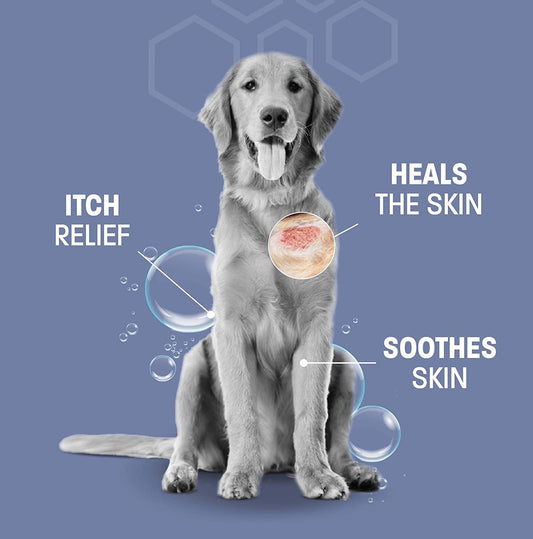Ever wondered what those long, twitchy hairs on a cat's face are really for? Yep, we're talking about whiskers. They're not just for show. Whiskers play a big role in how cats get around and chat with each other. Think of them as a cat's built-in GPS and mood ring, all rolled into one. From feeling out their surroundings to sending signals about how they're feeling, whiskers do a lot. Let's break down why these little hairs are so important in a cat's world.
Key Takeaways
- Whiskers help cats feel their way around, acting like sensors.
- They play a part in keeping balance and detecting changes in the environment.
- Cats use whiskers to communicate emotions and interact with others.
- Proper care of whiskers is important to avoid stress and discomfort.
- There are many myths about whiskers, but science gives us the real scoop.
The Anatomy of a Cat's Whiskers
Structure and Composition
Cat whiskers, also known as vibrissae, are not just ordinary hairs. They are specialized, longer, and stiffer hairs embedded deep in hair follicles, rich in blood vessels and nerves. This unique structure allows them to act as highly sensitive sensory tools. Whiskers play a critical role in helping cats understand their surroundings. Unlike regular fur, whiskers are deeply rooted in the skin, connecting to a rich supply of nerves that send detailed information to the cat's brain about its environment.
Growth and Shedding
Whiskers grow in specific spots on a cat's face, typically in four rows on each side of the nose, and they can also be found above the eyes, on the chin, and even on the back of the legs. These whiskers go through a natural cycle of growth and shedding, just like other hairs. However, they do not fall out all at once. Instead, they shed individually, ensuring the cat always has enough whiskers to maintain its sensory abilities.
Differences Among Breeds
Not all whiskers are created equal. There are noticeable differences among various cat breeds. For instance, some breeds like the Maine Coon have particularly long and thick whiskers, while others, such as the Sphynx, may have shorter or even curly whiskers. These differences can affect how each breed interacts with its environment, although all cats rely heavily on their whiskers for sensory input. The specialized hairs serve as essential tools for navigation and communication, regardless of the breed.
The Role of Whiskers in Feline Navigation
Spatial Awareness and Balance
Cats are known for their agility and grace, and a big part of this is thanks to their whiskers. These specialized hairs are not just for show; they play a crucial role in helping cats maintain balance and spatial awareness. Whiskers act as a natural GPS system, allowing cats to sense their surroundings even in complete darkness. They can detect the slightest changes in air currents, which helps them gauge the size and shape of nearby objects. This ability is particularly useful when a cat is trying to squeeze through tight spaces.
Detecting Changes in the Environment
Whiskers are incredibly sensitive to changes in the environment. They can pick up vibrations in the air, alerting a cat to potential dangers or prey. This sensitivity is why you might notice your cat twitching its whiskers when it's curious or cautious. In fact, whiskers are so sensitive that they can even detect the subtlest changes in temperature and pressure, providing cats with vital information about their environment. This sensory feedback is essential for their survival, especially when hunting or avoiding predators.
Nighttime Navigation
Cats are often active at night, and their whiskers are a key tool for navigating in low-light conditions. While their eyes are adapted for night vision, whiskers provide additional sensory input that helps them move confidently in the dark. Whiskers extend the cat's field of perception, helping them to avoid obstacles and move silently. This is why, even in pitch-black environments, cats can move with ease and precision. Their whiskers are like a second set of eyes, ensuring they can navigate their world safely and effectively.
Whiskers are essential for cats as they help detect environmental changes, especially in low light. They provide crucial feedback about nearby objects and spaces, aiding in navigation.
Whiskers as a Tool for Communication
Cats have a unique way of expressing themselves, and whiskers play a big role in their communication toolkit. These sensitive hairs are not just for looks; they convey emotions and help cats interact with the world around them.
Expressing Emotions
Whiskers are incredibly expressive. When a cat is curious or excited, its whiskers might fan out and move forward. Conversely, when a cat feels threatened or angry, its whiskers will pull back, lying flat against the face. This movement is a subtle but clear signal of a cat's mood, offering insights into how they feel at any given moment.
Interacting with Other Cats
In the feline world, whiskers are essential for social interactions. Cats use their whiskers to gauge the mood of other cats. When two cats meet, they often approach each other whisker-first, which helps them "read" each other's intentions. Whiskers act as an early warning system, helping to prevent conflicts and misunderstandings.
Human-Cat Communication
Cats also use their whiskers to communicate with humans. A friendly cat might approach you with whiskers forward, indicating curiosity and openness. On the other hand, if a cat's whiskers are pulled back, it might be best to give them some space. Understanding these signals can strengthen your bond with your feline friend.
Observing a cat's whiskers can reveal a lot about their emotional state and intentions. Paying attention to these subtle cues can enhance your relationship with your pet.
For more insights into how to care for your pet's health and understand their behavior, consider using Pet Genius, an AI-powered pet health assistant that offers personalized care and support.
The Sensory Function of Whiskers
Tactile Sensitivity
Cat whiskers, or vibrissae, are more than just cute adornments on a feline's face. They are highly sensitive tactile hairs that play a crucial role in a cat's sensory perception. Each whisker is embedded deeply into the cat's body, surrounded by nerve endings that send detailed sensory messages to the brain. This sensitivity helps cats detect even the slightest changes in their surroundings, making whiskers essential tools for exploring the world.
Whiskers and Hunting
In the wild, a cat's whiskers are vital for hunting. They help determine the precise location and movement of prey, especially in low-light conditions. The whiskers can sense vibrations in the air, allowing cats to stalk their prey with remarkable stealth and accuracy. This ability is not just useful for wild cats but also benefits domestic cats during playtime with toys, as it taps into their natural hunting instincts.
Responding to Touch
Whiskers are incredibly responsive to touch. When a cat's whiskers brush against an object, it triggers a response that helps the cat navigate its environment. This is particularly important in the dark or in tight spaces where visibility is limited. Whiskers provide feedback about nearby objects, helping cats avoid potential obstacles or dangers. This feature is why cats often rely on their whiskers to assess whether they can fit through small openings.
Fun Fact: Whiskers are so sensitive that they can even detect changes in the air. This sensitivity is why cats might seem to "see" things that are invisible to humans, as their whiskers pick up on subtle movements or changes in their environment.
Understanding the sensory function of whiskers gives us insight into why they are so important for a cat's daily life and overall well-being. Maintaining healthy whiskers is crucial, so always be mindful of your cat's whisker needs. Avoid touching them unnecessarily, and ensure your cat's feeding and living spaces are whisker-friendly to prevent stress or discomfort.
Caring for Your Cat's Whiskers
Avoiding Whisker Fatigue
Whisker fatigue is a real thing! It happens when a cat's whiskers become overstimulated from too much contact with objects. This can make your feline friend feel stressed or uncomfortable. To avoid this, consider using wide, shallow bowls for feeding. This way, their whiskers don't constantly brush against the sides. Also, keep an eye on their behavior. If they seem hesitant or fussy around their food or water bowls, it might be time for a change.
Proper Grooming Practices
While grooming is essential for your cat's health, it's important to remember that whiskers should never be trimmed. They are deeply rooted and connected to a cat's nervous system, making them highly sensitive. Instead, focus on regular brushing to remove loose fur and prevent tangles. This helps keep their coat healthy without interfering with their whiskers.
Recognizing Whisker Stress
Whiskers can tell you a lot about how your cat is feeling. If they're constantly bent or broken, it might signal stress or health issues. Pay attention to their condition and consult a vet if you notice any unusual changes. Healthy whiskers are typically straight and strong, reflecting your cat's overall well-being.
Remember, your cat's whiskers are more than just cute facial features—they're vital tools for sensing the world. Keeping them healthy is key to ensuring your pet's comfort and happiness.
For more insights into maintaining your cat's whisker health, including the importance of proper grooming, nutrition, and mental stimulation, consider observing their whisker condition regularly.
Myths and Facts About Cat Whiskers
Common Misconceptions
Cat whiskers are often surrounded by a lot of myths. One common myth is that cutting a cat's whiskers won't affect them. This is false. Whiskers are deeply embedded in a cat's skin and are connected to the nervous system, making them extremely sensitive. Cutting them can disorient a cat and affect their ability to navigate. Another myth is that whiskers indicate a cat's age, which isn't true. Whiskers can fall out and grow back, much like hair. Lastly, some believe that all cats have the same number of whiskers, but this varies among individual cats.
Scientific Insights
Scientifically, whiskers are known as vibrissae and play a crucial role in a cat's sensory perception. These specialized hairs are not just for show; they help cats detect changes in their environment. Whiskers are so sensitive that they can pick up on tiny changes in air currents, which assists cats in detecting nearby objects, even in the dark. This sensitivity is why whiskers are often referred to as a cat's "sixth sense."
Cultural Beliefs
Whiskers carry cultural significance in many societies. For instance, in ancient Egyptian culture, cat whiskers were considered a symbol of good luck and protection from evil spirits. This belief highlights the revered status of cats in Egyptian society. In some cultures, finding a shed whisker is thought to bring good fortune, and people may even keep them as lucky charms. These cultural beliefs underscore the mystique and admiration that cats and their whiskers have inspired throughout history.
Cats' whiskers are not just about looks; they are a vital part of their sensory toolkit, helping them to navigate the world with precision and grace.
Many people have heard strange things about cat whiskers. Some think they are just for decoration, while others believe they can tell how big a space is. In reality, whiskers are super important for cats! They help them sense their surroundings and navigate tight spots. Want to learn more about your furry friend? Visit our website for more fun facts and tips!
Conclusion
So, there you have it. Cat whiskers aren't just cute little features; they're like a multi-tool for our feline friends. These sensitive hairs help cats figure out their surroundings, even in the dark, and they play a big role in how cats "talk" to each other and to us. Whiskers can tell a cat if they can fit through a tight spot or if something's sneaking up on them. Plus, they give us clues about how a cat is feeling. Next time you see a cat, take a moment to appreciate those whiskers—they're doing a lot more than you might think!
Frequently Asked Questions
What exactly are cat whiskers made of?
Cat whiskers, also known as vibrissae, are made of keratin, the same substance that makes up human hair and nails. They're thicker and more deeply rooted than regular fur, allowing them to function as sensory tools.
Why do cats have whiskers on their faces and legs?
Cats have whiskers on their faces and legs to help them sense their surroundings. These whiskers are super sensitive and can detect changes in the environment, helping cats navigate and hunt even in the dark.
Can cutting a cat's whiskers hurt them?
Yes, cutting a cat's whiskers can hurt them. Whiskers are crucial for a cat's sense of balance and spatial awareness. Without them, cats can become disoriented and stressed.
Do all cat breeds have the same number of whiskers?
Not all cat breeds have the same number of whiskers. While most cats have 24 whiskers, 12 on each side of their face, some breeds might have more or fewer due to genetic differences.
How do whiskers help cats communicate?
Cats use their whiskers to communicate by moving them. Forward-facing whiskers can indicate curiosity or excitement, while whiskers pulled back might mean the cat is scared or angry.
What is whisker fatigue and how can I prevent it?
Whisker fatigue happens when a cat's whiskers are overstimulated, often from touching the sides of a narrow food or water bowl. To prevent it, use wide, shallow dishes for feeding your cat.









